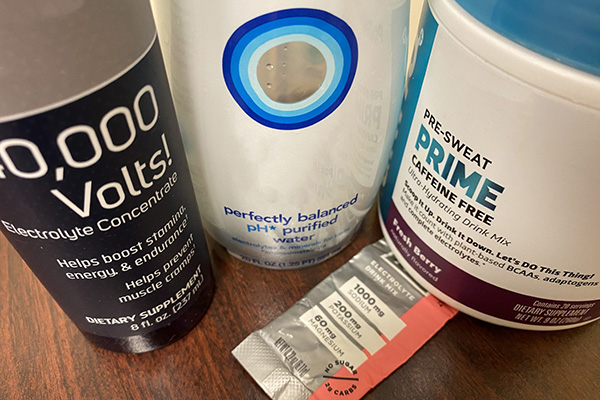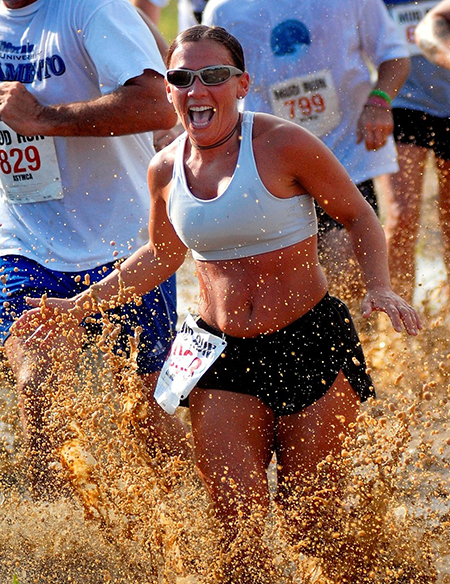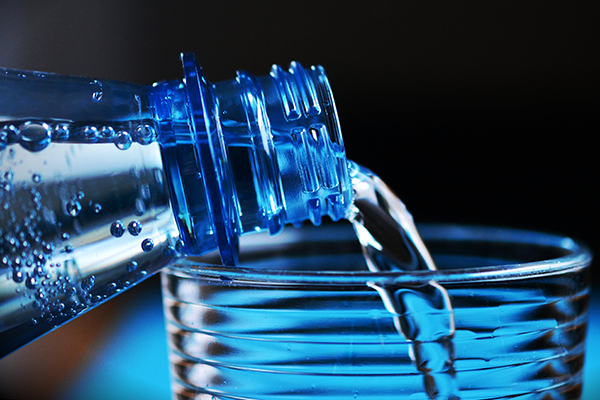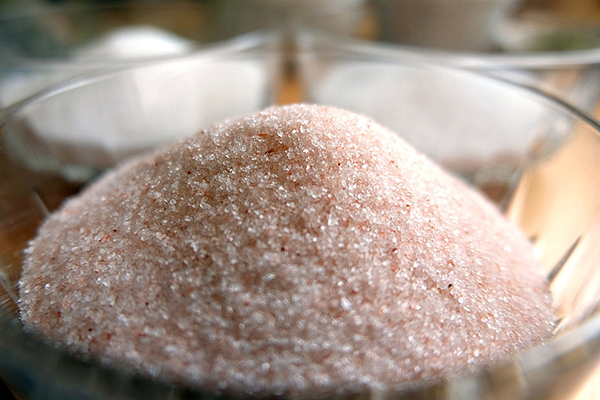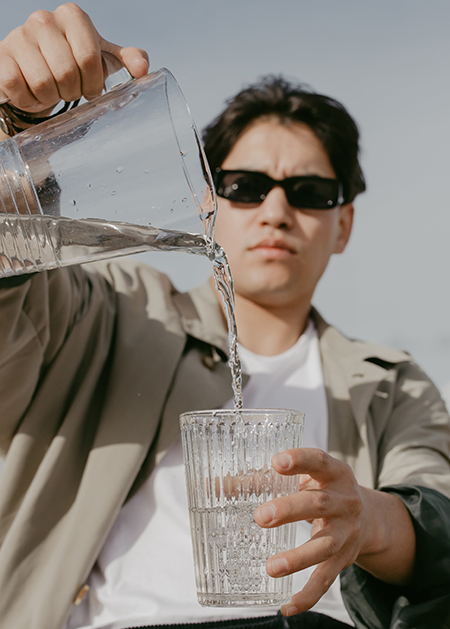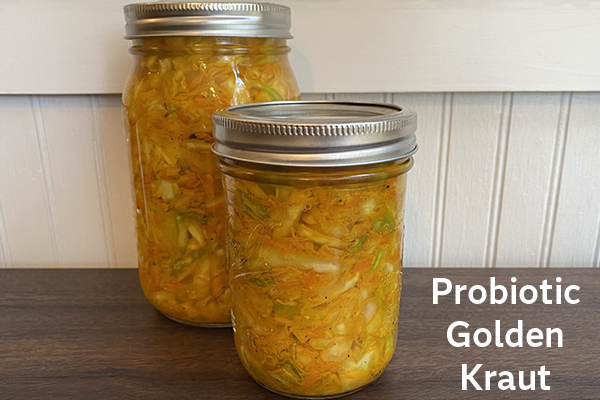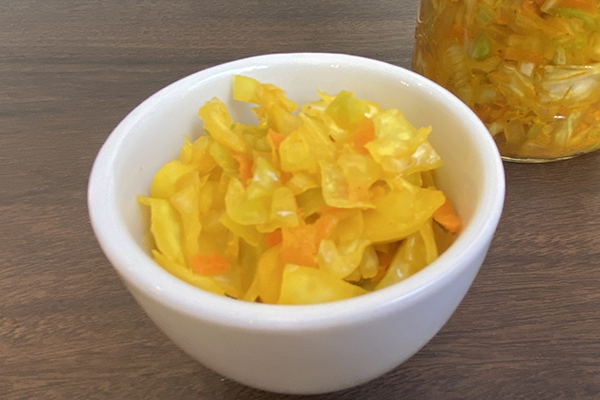Electrolyte drinks (think Gatorade and Powerade) have been marketed to athletes for decades, but in the last few years electrolyte water, powder, drops and tablets have become all the rage. With electrolyte replacement options galore on the store shelves, you may be wondering if you should be taking them. There’s no doubt that we all need electrolytes, but do we really need to supplement with them?
Is #electrolyte water healthy or just a successful marketing trend? #saslife Click To Tweet
What are electrolytes?
Electrolytes are substances your body needs to conduct electrical charges that keep you alive and functioning. Sodium, magnesium, potassium, calcium, chloride, phosphate and bicarbonate are the key electrolytes that help your body maintain its fluid balance and support brain function, heart rhythm and muscle control.
Do you need more electrolytes?
Our bodies naturally excrete electrolytes (mostly in urine, but also through sweat and feces), and when we eat and drink, we naturally replace them. If your body quickly loses fluids, however, electrolytes can get depleted along with the water. You may need to take in more electrolytes if you:
- Sweat a lot due to exercising at a moderate to high intensity that lasts more than 60-90 minutes, spend time in extreme heat, or have a high fever for an extended time (accelerates sodium and chloride loss)
- Significantly deplete your glycogen stores and lower your insulin levels in short periods of time due to a recent change in your eating pattern such as fasting or a low carb/ketogenic diet (accelerates sodium, potassium and magnesium loss)
- Have too much alcohol (accelerates sodium and magnesium loss)
- Undergo significant stress (may accelerate magnesium loss)
- Have significant diarrhea or vomiting (accelerates bicarbonate and chloride loss)
Symptoms of dehydration and electrolyte depletion include: headaches, muscle cramps, fatigue, nausea, brain fog, constipation, irritability and/or sugar cravings. Some additional symptoms of electrolyte imbalance are muscle twitches, irregular heartbeats and cravings for salty food. Always seek medical assistance if you think you may be clinically dehydrated or have a severe electrolyte imbalance.
Other medical conditions such as very low blood pressure, postural tachycardia syndrome, uncontrolled diabetes, refeeding syndrome and certain medications also require adjustments to electrolytes that a health care provider can assist with.
Replacing electrolytes
Electrolytes are naturally found in the foods we eat. Plants and animals need electrolytes to survive too, so when we eat them, they pass these ingredients on to us. In general, food should give you all the electrolytes you need. Check out these foods that are high in potassium, magnesium and calcium which many people simply don’t get enough of on a day-to-day basis.
As you read above, excessive sweating and drops in insulin levels lead to an increase in sodium loss. My favorite food sources of sodium and chloride are olives, sauerkraut, pickles and smoked salmon, and of course you can easily add salt to your food if you happen to need more.
Everybody responds a bit differently to fluid loss. For example, some people have very salty sweat and may require more sodium replacement than others after a long, hard workout.
If you feel good and generally hydrate and fuel yourself well throughout the day, then there’s no need to supplement with electrolyte drinks. However, if you decide you want to dip your toe in the electrolyte water so to speak, you might benefit from a simple inexpensive strategy. Sodium and chloride are the electrolytes that need the most replacement due to sweating or a steep drop in insulin levels from dietary changes, so adding a pinch of sea salt (about 1/16 tsp which contains about 150 mg sodium) to your water or directly under your tongue can often do the trick for maintaining sodium levels in these specific circumstances. And sea salt happens to contain a little potassium, magnesium and calcium to boot. Sodium is also an electrolyte-sparing agent which means if you prevent your sodium levels from dropping too low, you are less likely to become depleted in other electrolytes. (Some people get more sodium than they need, so take this recommendation with a grain of salt.)
Many of us don’t get enough magnesium through our diet, and true magnesium needs may be higher than general recommendations, so a high-quality supplement like magnesium glycinate may be worth trying.
If you want the convenience of a portable packet to add to water, LMNT is a clean brand that is sure to replete lots of sodium for those salty sweaters. You can also try making your own natural sports nutrition beverage or watermelon electrolyte drink. Coconut water and even new-to-the-scene maple and cactus water contain some electrolytes but are generally low in sodium, and electrolyte content varies by brand, so if you really need some replacement, they may not do the trick.
What should you know about electrolyte drinks/supplements?
Electrolyte drinks, powders, drops and tablets vary widely in the amount and types of electrolytes they include.
If your electrolyte water doesn’t list how much sodium, potassium and magnesium it contains, it’s safe to assume there are negligible amounts, and you are just paying for some trendy marketing. (Products may or may not list chloride on the Nutrition Facts, but if the ingredients list includes sodium chloride, you’ll know the chloride is in there.)
They often contain added sugar, artificial sweeteners or other no calorie sweeteners.
Electrolyte water and sports drinks are often accompanied by added sugar for flavor and to potentially increase sodium and water absorption into the bloodstream. Glucose can speed up sodium and water absorption into the bloodstream via channels called sodium glucose symports which may be helpful for some people, but sugar isn’t completely necessary for absorption.
Some manufacturers use a few different types of sweeteners and natural flavors, so comb the ingredients list if this is a concern for you. There’s some evidence flavors can cause a cephalic phase insulin release, contributing to hunger levels, so if you are using electrolytes between meals, the sweet and flavored stuff may make you hungrier.
Don’t overdo it.
Highly concentrated electrolyte drinks/powders can cause gastrointestinal distress in some people, so drink slowly if it’s your first time trying it. You should be getting most of your electrolytes from your food, but there’s usually no harm in having one or two electrolyte drinks per day if you need some replacement unless you have a medical condition or medication that requires restricting certain electrolytes.
The bottom line
If you are healthy, drink plenty of water, eat balanced meals made with whole foods and don’t sweat profusely for long periods of time, you probably won’t get much (if any) benefit from drinking electrolyte beverages. Sticking with plain water and real foods is best for normal day-to-day living. If you have significant fluid and electrolyte loss, be choosy about your electrolyte replacement and read labels.
Probiotic Golden Kraut
Makes 1-2 jars
Recipe adapted from Amy Myers, MD
PRINT RECIPE
Ingredients
1 medium head of cabbage
1 small onion
2 carrots
6 cloves of garlic
2 Tbsp ginger root, grated
1 Tbsp turmeric powder
1 tsp black pepper
4-6 tsp sea salt (about 2 tsp per pound of cabbage)
Instructions
- Prep your produce. “Shred” the cabbage with either a knife or a food processor. Slice the onion. Grate the carrots, ginger and garlic cloves.
- Mix all produce together in a bowl with the turmeric and black pepper. Sprinkle 4 teaspoons of salt over the top.
- Allow mixture to sit for 15-20 minutes. After 10 minutes, put on a pair of food-safe gloves and massage the mixture until liquid is released.
- Add the sauerkraut to clean glass jars. Ensure vegetables are submerged fully in the liquid. If more liquid is needed to submerge the cabbage, make a brine by mixing 1 ¼ teaspoons salt to 1 cup water, and add this to the jar.
- Allow to sit in a cool part of your home away from direct light for 3 to 10 or more days. The longer it sits, the more fermented it will become. Briefly open your jar of sauerkraut once a day to “burp,” or release, the built-up gasses. Make sure the cabbage is fully submerged in the liquid before putting the lid back on.
- Once you’ve achieved your preferred taste and texture, move your sauerkraut to a clean jar and store in the fridge.
